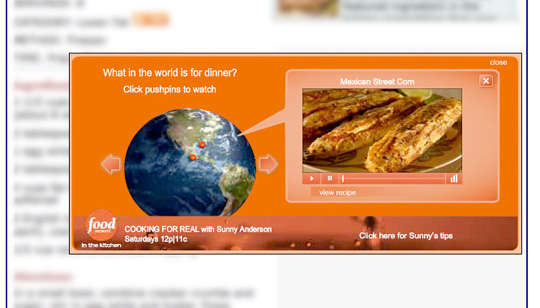Google Testing (Annoying) Expandable Ads
In a dual-barrel announcement, Google is introducing “expandable ads” to its AdSense and AdWords programs. Expandable ads are those annoying banners/graphics that expand and cover up the actual page content, as shown in this Google example: To Google’s credit, these ads will score somewhat lower on the annoyance meter than similar ads from other systems […]
In a dual-barrel announcement, Google is introducing “expandable ads” to its AdSense and AdWords programs. Expandable ads are those annoying banners/graphics that expand and cover up the actual page content, as shown in this Google example:
To Google’s credit, these ads will score somewhat lower on the annoyance meter than similar ads from other systems because the ad won’t expand on a simple mouseover; it’ll only expand when the user clicks to see the full ad. Google also says there are other rules in place to minimize the ads’ impact on usability:
- An expandable ad won’t expand more than double its width or height.
- Once expanded, the ad will appear as a layer over the page content so that your content will not be modified or shifted in any way.
- The user may close the expanded panel at any time.
Although users have to click to see the full ad, publishers won’t make money from CPC ads unless the user also clicks a second time to visit the advertiser’s web site. At the moment, expandable ads are only open to publishers based in North America and Europe with web sites in tese languages: Dutch, English, French, German, Italian, Portuguese, or Spanish.
On the AdWords side, Google is calling this a beta test and says it’s only open to U.S. advertisers and agencies participating in Google’s 3rd Party Ad Serving Program.
Opinions expressed in this article are those of the guest author and not necessarily Search Engine Land. Staff authors are listed here.
Related stories
New on Search Engine Land
